Sometimes words say it all. Sometimes they don’t. But, with the Whale Fin Snake Plant, you get the picture just by hearing its name.
Take one look at this beauty and you will see what you’re thinking – it looks like a whale fin!

This post includes affiliate links.
Table of Contents
Whale Fin Sansevieria Plant Background
The Whale Plant is native to the Democratic Republic of Congo in central Africa. The scientific name of the Whale Fin used to be Sansevieria Masoniana. It’s also what most plant enthusiasts and nurseries still call it. It was commonly known to be in the Snake Plant family.
In fact, I was in my neighbor nursery a few days ago and the staff member referred to it as Sansevieria plants!
However, now it technically classified as being part of the dracaena species of plants and it’s new botanical name by Dracaena masoniana. These plants are always keeping us on our toes!
The other common name that this plant is also sometimes called is the Mason’s Congo Sansevieria. This is a nod to the Englishman who brought it to Europe, Maurice Mason.
As mentioned above, this plant paddle-like leaves that resemble whale fins. It has a scale- like dark green mottling that gives the snake plants their name.
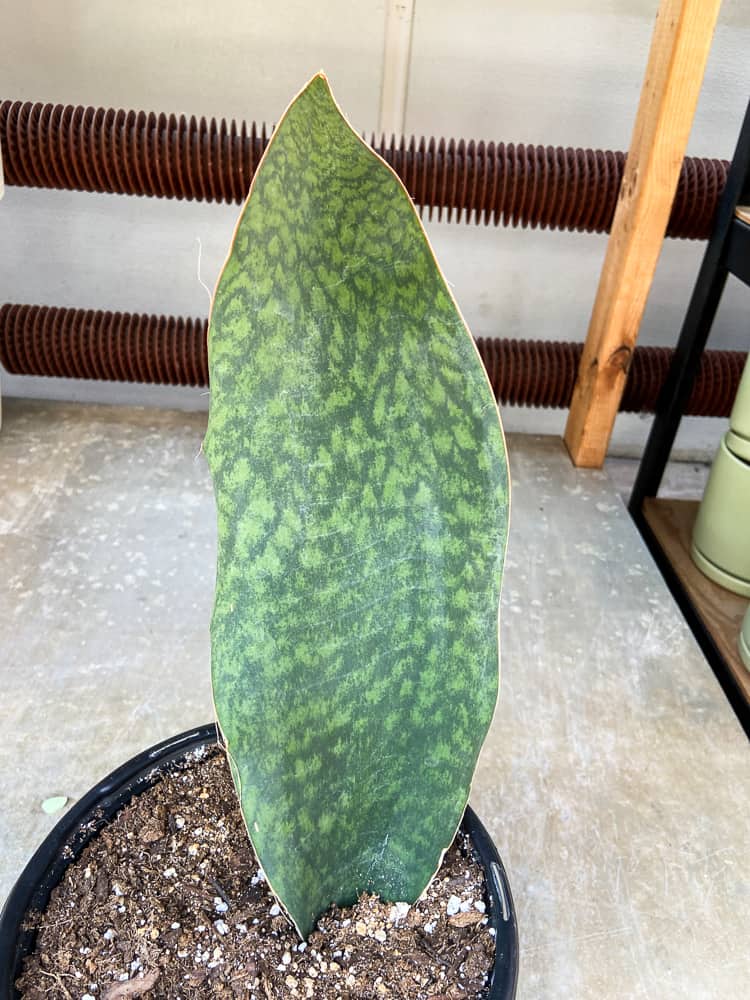
Toxicity
The Whale Fin Snake Plant is toxic to both humans and pets. It can cause nausea, vomiting, and diarrhea. You will need to keep this plant away from both small children and pets for this reason.
Whale Fin Snake Plant Care
With proper care, your new plant will be happy and healthy for a long time. Here’s the best care tips you need to know!
Watering Requirements
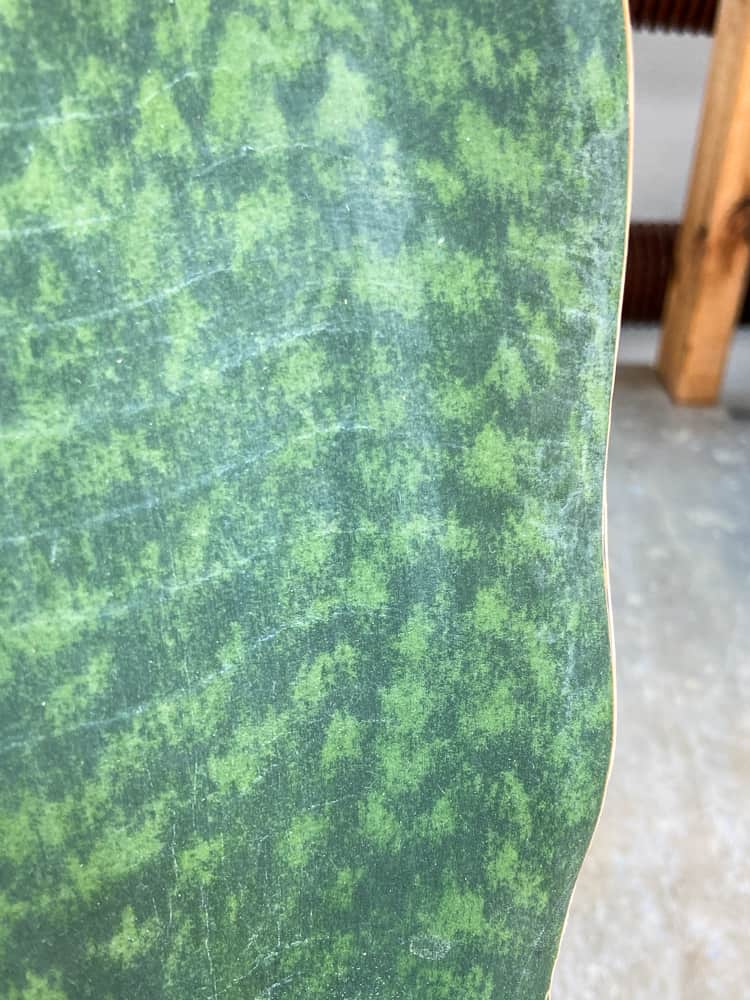
Whale Fin Snake Plants are very drought tolerant and do not need to be watered very often. You will only need to water your plant once the soil is completely dry. You can test this by sticking a chopstick or your finger into your plant all the way to the bottom of the pot.
If the chopstick (or finger) comes out dry, then it is time to water. If there is soil sticking to the chopstick, then wait a while.
You can check this as often and you need to, but it is best to not overwater. It is always best to err on the side of underwatering a snake plant since they can survive even a few months without water!
One way you may notice that your plant is underwater is if the leaves begin to curl on the edges. This is not necessarily the case, but is a good indicator that your plant may be underwatered. Once you water your plant again, the leaves will uncurl and return to their original position within a couple of hours.
Light Requirements
The best light conditions for your Whale Fin Snake Plant is medium indirect light. It can tolerate between 5-6 hours of indirect sunlight each day.
If you don’t have a place to put your indoor plant to provide this light requirement, it can tolerate lower light levels. Direct sunlight can scorch your plant’s leaves.
Low light conditions will cause your plant to be slower growers and the new growth will be long and leggy. The more light you provide for your plant, the better.
The more light you provide, the more the process of photosynthesis will take place. This also helps your plant be more resistant to pests and diseases when it is a healthy plant!
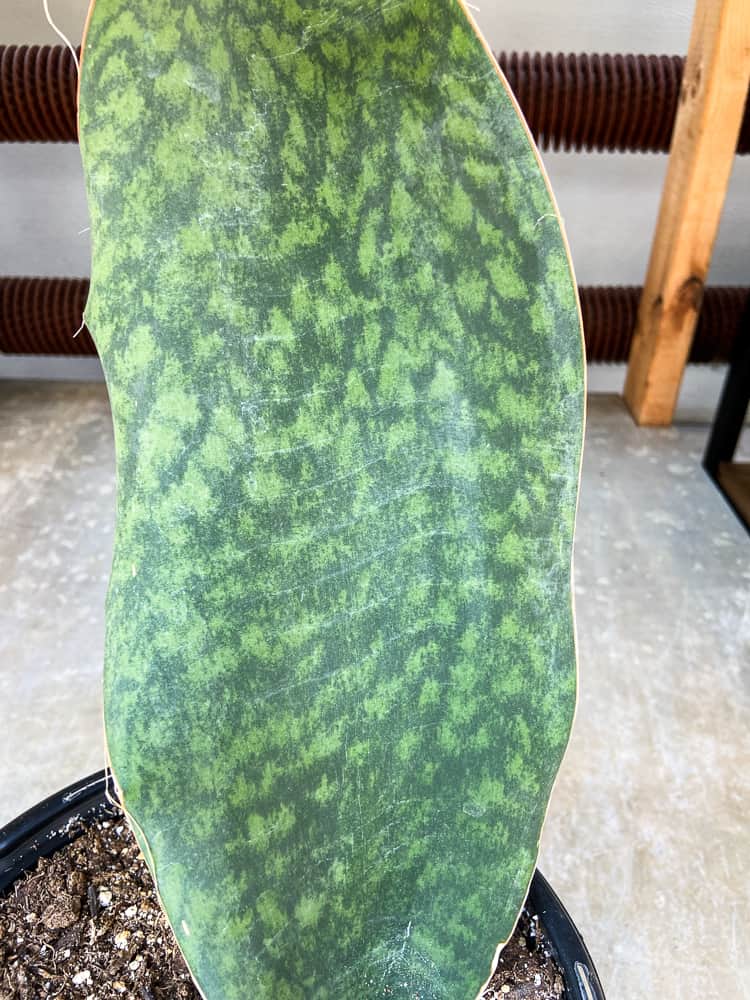
Soil Requirements
You always want to use well-draining soil for your Whale Fin Snake Plant. This will help the soil dry out quickly between waterings and not be soggy. A drainage hole on the bottom of your pot will also help!
You can either purchase a ready made potting mix or make one of your own. You can use a ready made soil and mix it with 1 part perlite, pumice or coarse sand. This will help the soil to drain readily and keep only the necessary moisture after watering.
Fertilizing Requirements
Whale Fin Snake Plants need to be fertilized with a low nitrogen fertilizer once every two to four weeks during the growing season. Make sure to follow the directions carefully on the package.
Also be sure you don’t fertilize a plant if it is not growing as the nutrients will just accumulate in the soil and over time, they can burn the roots and damage your Whale Fin plant.
When considering how or when to fertilize your Whale Fin Snake Plant, keep this in mind. You never need to fertilize your plant if you repot it annually. When you repot your plant annually, the new soil will provide your plant with the necessary nutrients and fertilizing is not necessary.
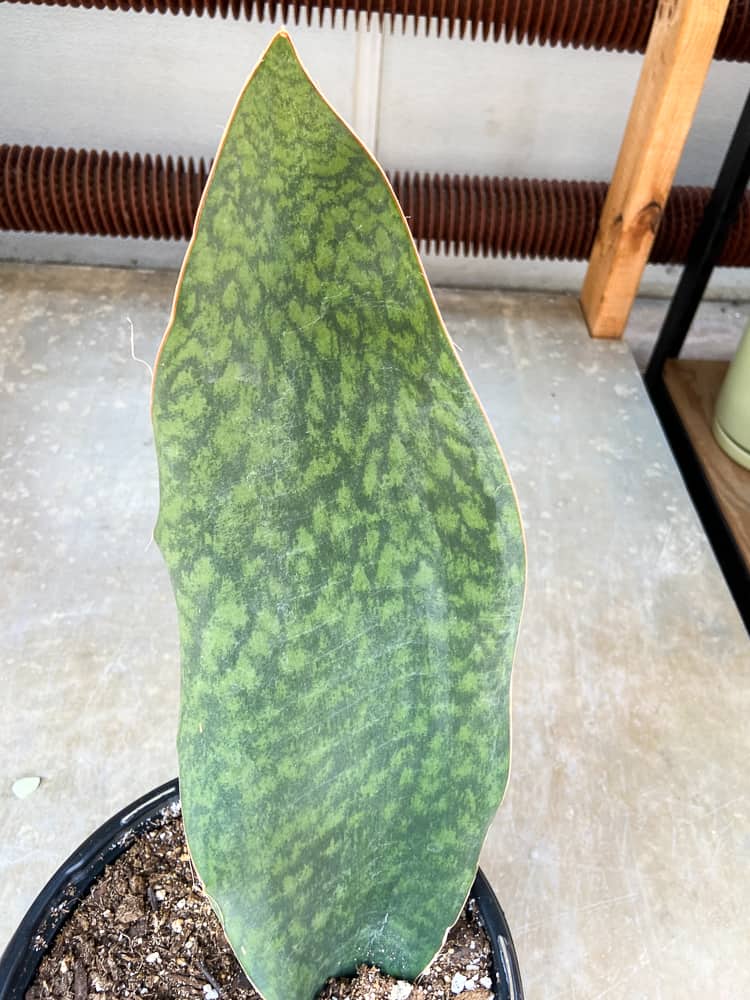
Temperature and Humidity Requirements
The optimum temperature range for your Whale Fin Snake Plant is between 60 and 85 degrees F. These are also frost tender plants, so you want to be sure to bring your plant indoors during the winter months.
Also, be sure to keep them far from any drafts or cold windows when they are inside your home. This can also cause problems for them. Temperatures below 60 degrees F can slow down both the leaf and root development.
The nice thing about a Whale Fin Snake Plant is that the humidity requirements are quite variable. They can withstand humidity levels anywhere between 5% and 25%. However, even if the humidity level is over 70% in your home, your plant will be just fine!
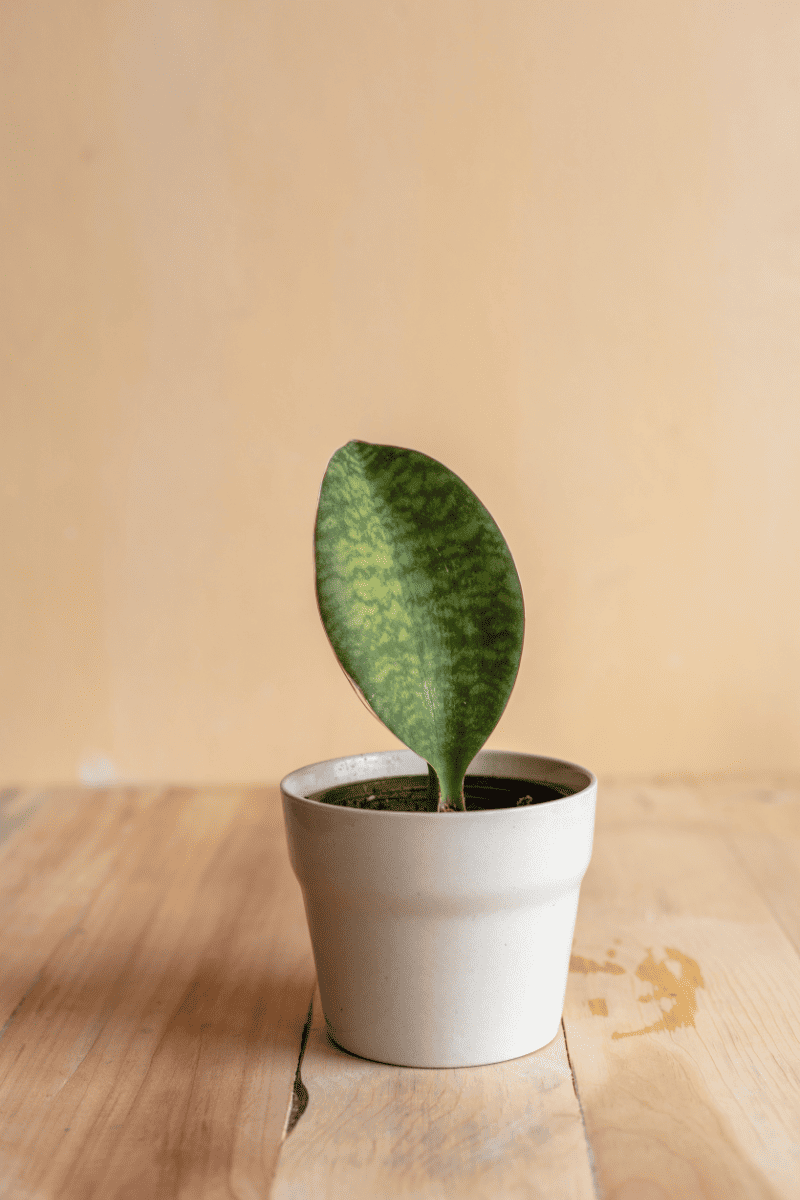
Pests and Diseases
Some of the pests that are common for a Whale Fin Snake Plant are aphids, thrips, mealybugs, spider mites, scale and fungus gnats. Both aphids and thrips are sap-sucking insects, but thrips have the added benefit of flight so are much more difficult to contain and treat.
To treat aphids, you can use a spray bottle with water and a few drops of dish soap. Spray the soap and water mixture to the plant every two days for up to two weeks and the aphids should be gone. If thrips are the problem, then a stronger solution would be to use an insecticidal soap or neem oil applied every week until the problem abates.
Spider mites most likely will appear when you spot a fuzzy texture on your Whale Fin plant’s leaves. Those are the webs that have been woven by the microscopic spider mites. These can be treated by using 30 oz. of water with one cup of rubbing alcohol (at least 70% concentration) and spray the leaves. Repeat this process until the mites are gone.
As far as common diseases for the Whale Fin Snake Plant, these would be a fungal disease like Red Leaf Spot, Southern Blight, and Soft Rot.
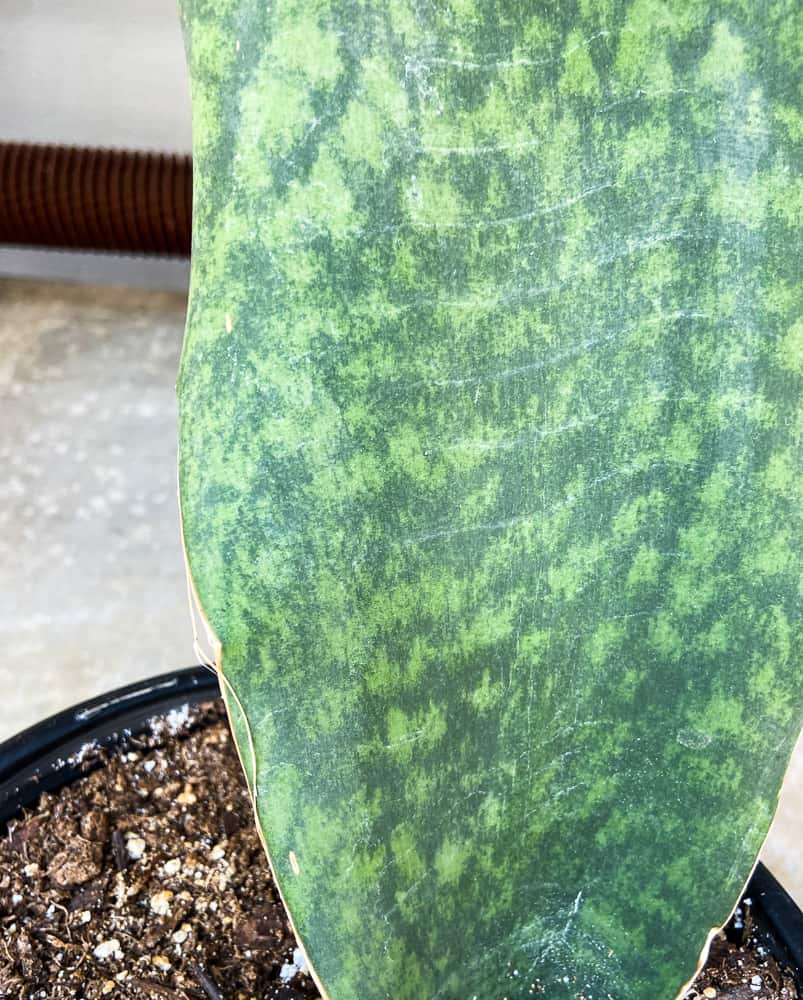
Red Leaf Spot will appear as reddish brown lesions, sometimes with a yellow border, which occur on young leaves. It usually happens when the leaves are wet and fungal spores are present. This can be treated with a fungicide and keeping the foliage dry.
Southern Blight shows up as water soaked necrotic lesions on leaves near the soil line. This will lead to stem rot and wilting of your plant. If you find this in your Whale Fin plant, the best remedy is to discard this plant.
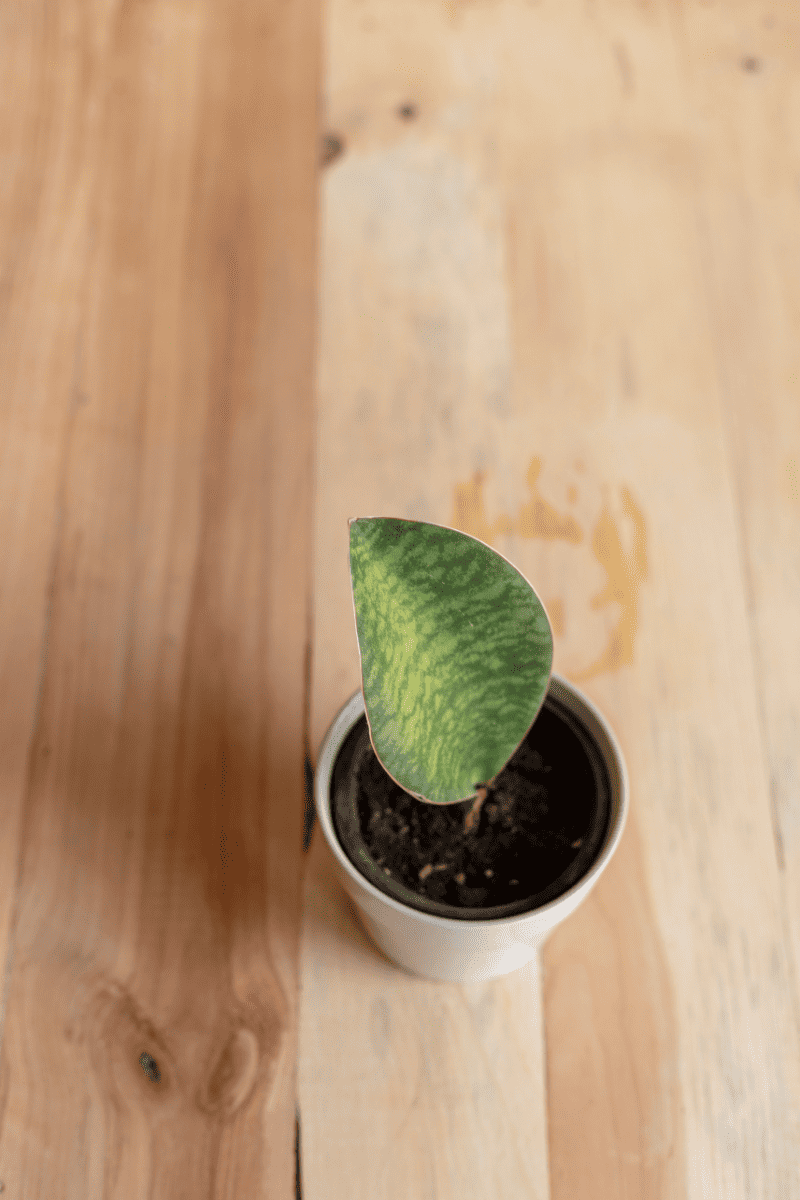
Soft Rot is a bacterial problem and is common during propagation. It shows up as mushy soft rot of the lower end of the leaves and may even give off a fishy, rotten odor. To prevent this from happening, be sure the plant leaves stay dry.
Pruning and Repotting
Whale Fins require very little maintenance as far as houseplants go. Their leaves do require a little bit of dusting every once in a while due to their size, but other than that, not much else is required. You can do this when you water your plant to make it easier to remember.
If you want to keep your plants the same size, you can trim your Whale Fin every two to three years. You can do this by using a sharp and sterilized pruning shear to prevent any infection to your plant. Cut off the leaf cuttings from the baseline even with the soil leaving no stumps behind.
You won’t need to repot your Whale Fin very often since they are slow growers. Some people never repot theirs since they start growing them in a large pot.
If you do decide to repot your Whale Fin, however, you will want to remember that you need to use a pot that is heavy, stable and large with good drainage. The width needs to match the length of the leaves for ample root growth.
You also need to remember that when you plant a Whale Fin, it should be buried deeper than most other plants. Depending on the size of their leaves, place the plants one to two inches under the potting soil surface.
This will help the plant remain stabilized without becoming top heavy. You may also need to use stakes to support your plant at some time, but they can also scratch the leaves and leave scars on the surface.
Common Problems
Curling Leaves
Curling leaves can become a problem when your Whale Fin is underwatered. While it is true that they can go a long time without water, if they are left for too long, the leaves will begin to curl inward. Check the soil to determine if it is 100% dry. Once you water your plant, it should return to its normal state within 24 hours.
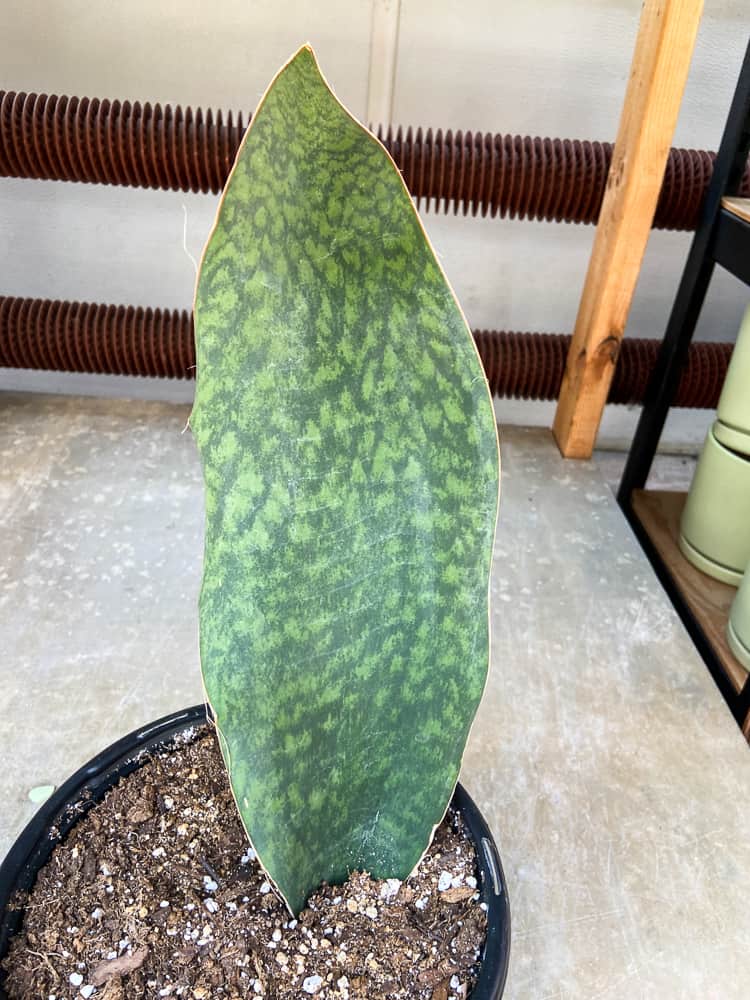
Mushy Leaves and Stems
This can be a result of overwatering or infection. Root rot can also cause the leaves to become mushy. Snake plants are especially susceptible to root rot, so take care to give your plant too much water. Unfortunately, once root rot begins, there is not much chance of your plant surviving. Preventative care goes a long way to keeping your plant healthy!
Yellowing Leaves
This is most often a sign of overwatering your plant. You will need to ensure that the soil your plant is in is well draining soil and you will also need to be sure the soil is completely dry before you water the plant again. Never water when your plant has soggy soil.
Slow or No Growth
There is a normal growing stage and dormant stage for these plants. Most often, the fall and winter months are the slow growing time of year for them. However, in the spring and summer, you should see some growth in your plant. If your plant is not growing, it probably needs more light.
Where to Buy
FAQs
The Whale Fin Snake Plant usually produces offsets or pups every two to three years. These can be divided and propagated once they show they have a good root system.
Using ice cubes is probably not the best way to water your Whale Fin. The temperature of the ice cubes is too harsh for your plant and can shock the roots and lead to damage to your plant. It’s better to use room temperature water when watering your plant.
If you take good care of your Whale Fin and keep it healthy, you can expect it to grow up to three feet tall at maturity.
In Conclusion
As we’ve seen, this plant is a very interesting and unique succulent that stores moisture in its leaves. It is fairly easy to maintain and keep healthy if you follow a few simple steps.
If you have a spot that get nice bright indirect light in your home or office and want to give it a go, try growing one of these low maintenance Whale Fins and add a little bit of diversity to your houseplant collection! As always, keep on growing!
Want to check out other varieties of snake plants? Check out 21 Popular Types of Sansevieria Plant Varieties here!
